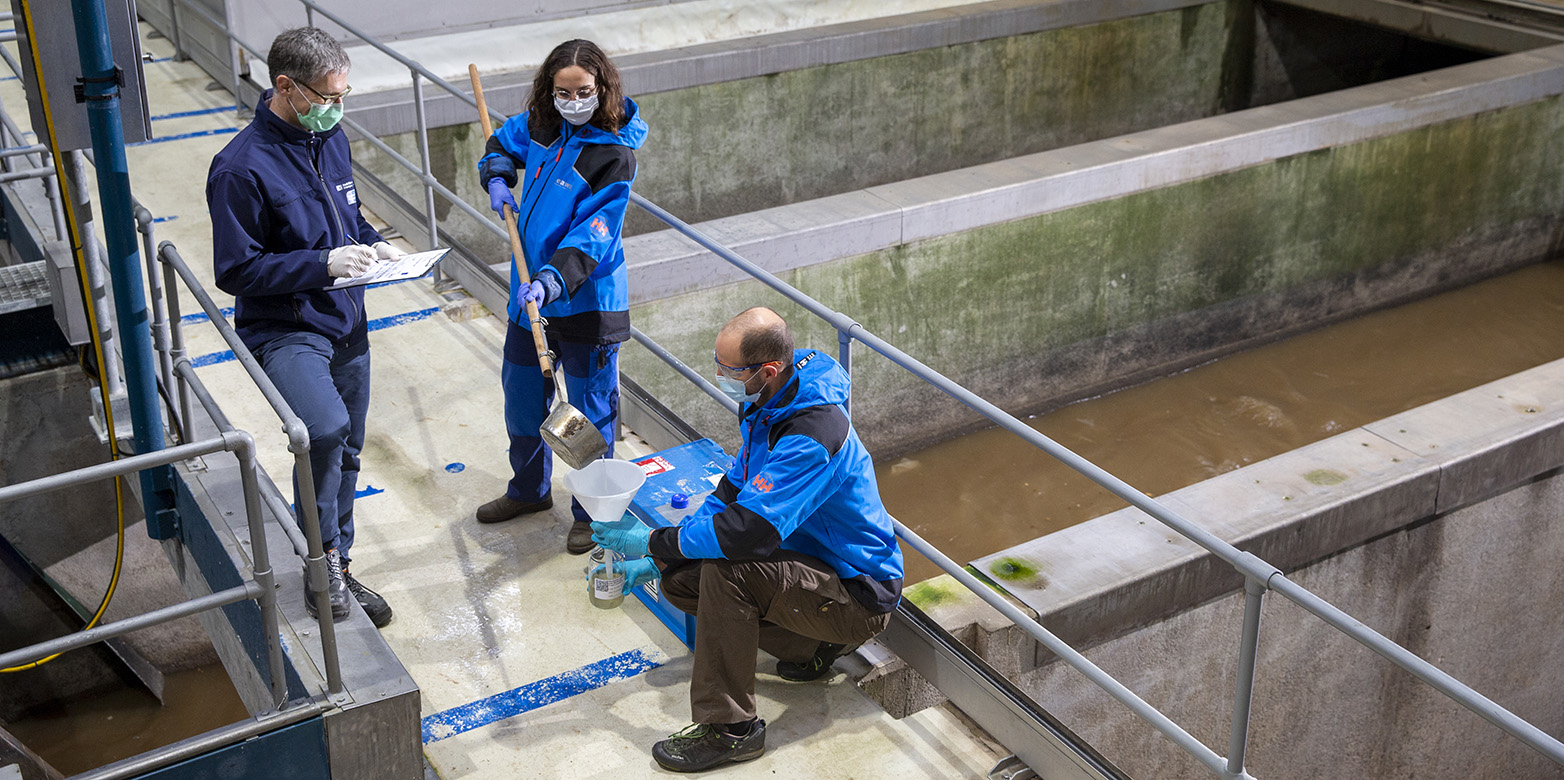Managing pandemics by analysing wastewater
Wastewater analyses provide information on the spread of diseases in the population - an important tool for monitoring the further course of the pandemic.

Following two years of pandemic and the discontinuation of Corona measures, how can we keep the situation under control? Wastewater analyses provide a significant indication of the situation. Irrespective of the number of tests carried out, the wastewater shows quite accurately how high the virus load is in the population and which virus variants are prevalent. "These are truly representative of the catchment area of a sewage treatment plant, as they give a picture of the entire population of that region," explains Niko Beerenwinkel, professor at the Department of Biosystems Science and Engineering at ETH Zurich in Basel.
"The wastewater analyses are representative of the catchment area of a sewage treatment plant, as they give a picture of the entire population of that region."Niko Beerenwinkel
In addition to the current virus load, the wastewater samples can also be used to track the spread of various virus variants. For example, the virus variant Omicron could already be detected in Switzerland when we thought it only existed in South Africa. Furthermore, the analyses provide an indication of the dynamics of the individual variants, how they develop in relation to each other and how contagious they are. All of this helps the authorities to assess the situation and, if necessary, to take new measures.
The technology for identifying the virus variants was developed in collaboration between researchers at ETH Zurich, EPF Lausanne and EAWAG. To determine the virus variants, the RNA must be sequenced, which is a challenge because the virus RNA in wastewater disintegrates over time. The bioinformaticians of the Computational Biology Group at ETH Zurich have therefore developed a special algorithm that helps to identify the virus variants.

Samples are taken and then analysed in the laboratory.
Aspects of time and environment
However useful and conclusive the wastewater analyses are, there are also challenges. Environmental factors such as heavy precipitation and chemicals can affect the concentration of Corona RNA molecules in wastewater and distort the results. The virus itself has also proven to be tricky: in Omicron, the increase in viral load was not as steep as expected given the case numbers. Based on a few existing studies, Christoph Ort from EAWAG suspects that this is due to the slightly lower viral load of those infected and the shorter period of infection of Omikron. Constant adjustment of the algorithms on the part of the researchers is therefore essential.
Currently, the aspect of time is also a disadvantage. It takes at least two weeks from taking the sample to the results. One of Christoph Ort's great aspirations is to one day be able to measure viral pathogens and diseases directly at the sewage treatment plant. The ETH is currently in the process of automating the above-mentioned process and thus speeding it up considerably.
Regular monitoring for the benefit of health
The mostly positive experience with wastewater analyses over the past two years prompted the Federal Office of Public Health (BAG) to make wastewater monitoring an integral part of health surveillance. At the moment, wastewater is being analysed for Coronavirus residues in six sewage treatment plants. By the end of the year, there should be a hundred of them, representing approximately 70% of the Swiss population.
The science programme external pageNANOcall_made on the TV channel 3Sat recently broadcast a feature on the topic of "variant screening in wastewater" (in German).

Niko Beerenwinkel, Professor of Computational Biology at the Department of Biosystems Science and Engineering of ETH Zurich in Basel.
Contact/Links:
Projekt Webseite: Surveillance of SARS-CoV-2 genomic variants in wastewater – Computational Biology Group | ETH Zurich
BSSE Departement of Biosystems Science and Engineering: Computational Biology Group
ETH News: "Wastewaterprovides representative data on viral strains”
Do you want to get more "News for Industry" stories?
external pageFollow us on LinkedIncall_made
Are you looking for research partners at ETH Zurich?
Contact ETH Industry Relations
